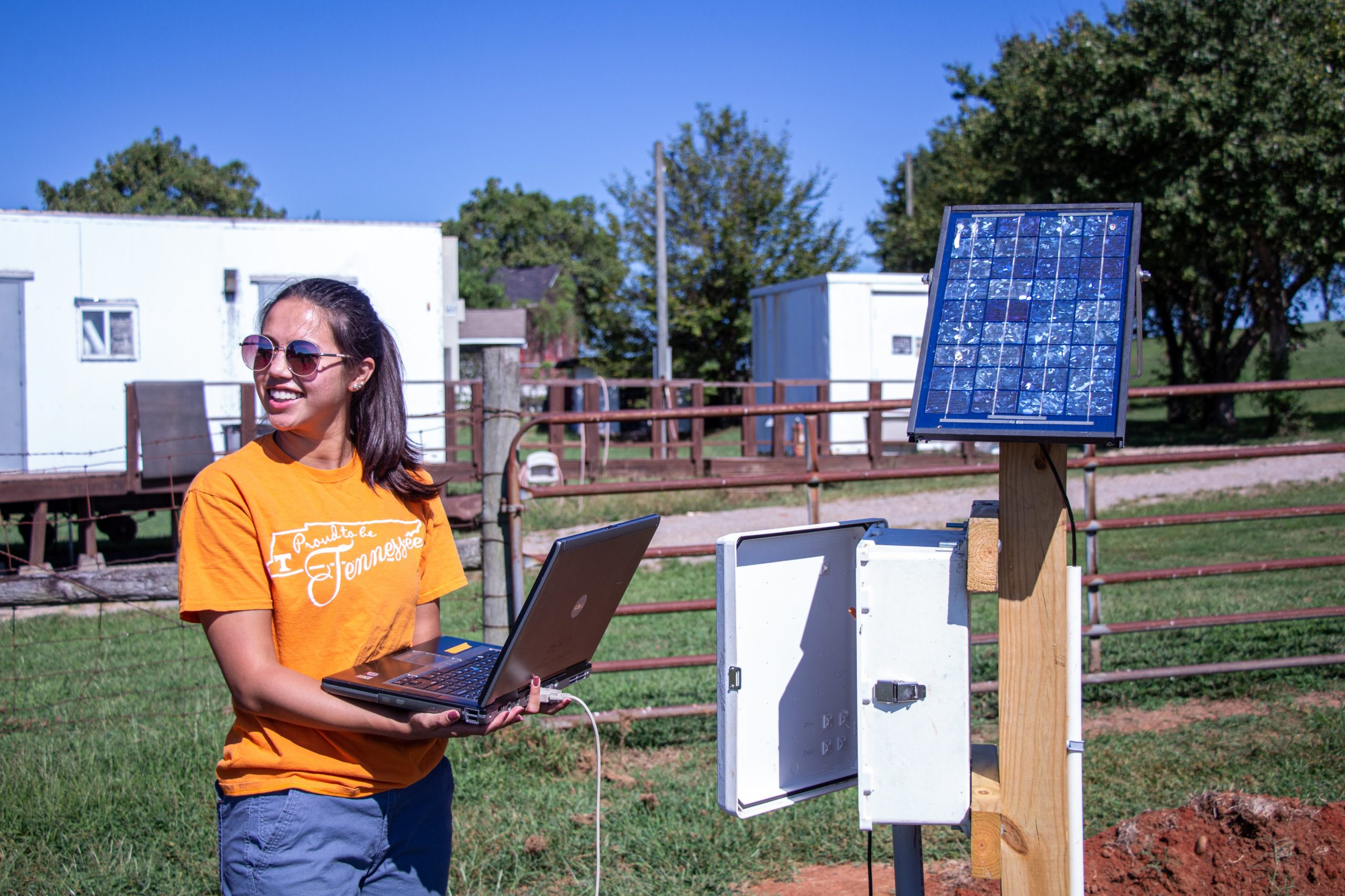Madison Oehler of Elkridge, Maryland is a senior in biosystems engineering at the University of Tennessee, Knoxville who is working to solve an argument between contractors and emitter tubing companies when it comes to installing tubing for subsurface drip dispersal systems, which are used to renovate wastewater.
Oehler explained, “Contractors believe the emitter tubing should be placed five feet apart, and companies that sell tubing believe it should be placed two feet apart.” The crux of this argument is financial – if the contractors can place the tubing further apart, then they don’t have to purchase as much tubing from the companies that sell it.
Dr. John Buchanan, Associate Professor in Biosystems Engineering and Soil Science, tasked Oehler with designing a system that would help settle the feud. Using the commercial drafting software, AutoCAD, Oehler created a design that would maximize soil profile and find the optimal spacing for the tubing. Recalling what she had learned in her courses on water flow, and applying some newly-learned shop skills, she then built the system she designed herself.
Oehler said that it has been rewarding to have a lot of responsibility with this project: “On previous research [projects], I had been given tasks to do, but on this project I was able to make decisions…It has taught me that I am capable of doing a wide variety of tasks.”
We encountered her and Dr. Buchanan as they were installing the system in the ground at the Holston Unit of the East Tennessee Research and Education Center right off the banks of the Tennessee River in East Knoxville.
Oehler said, “The most difficult part was making sure that if there were any leaks in the system, they got fixed. This is important because a leak in the system would destroy any accuracy we would hope to get from this experiment.”
The next step is to place soil moisture sensors in between the emitter laterals. After that, Oehler will collect data from the sensors, which will help her understand if the zones of soil between the emitters are being maximized. She will then be able to determine the appropriate measurement of spacing.
While her research has allowed her to grow academically, Oehler said that participating in this project has helped her grow in other ways, too: “I learned that it is okay to make mistakes and ask for help. In the past, I have struggled with speaking up and asking for help when I do not know how to do something…I learned that [mistakes] will sometimes happen, but it is not something to stress about because they can be corrected.”
She said that her research has given her direction in both school and life: “I came into my major not knowing what I really wanted to do after college. Through my research experiences, I have found different topics I like and others I do not. It is a great way to get experience and apply the skills you learn in class to a real life setting.”
When asked what advice she would give to other undergraduates looking to get involved in research, Oehler said, “One of the best ways to get involved is to go up and speak to a professor that does research within your department or a department that interests you. I remember being really nervous at first, but now looking back there was no reason to be. Initially, it seemed a little intimidating, but the more I got involved, the more comfortable it got.”
